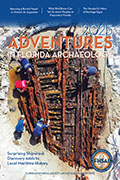Paulina Lu was born in Shanghai, China, in 1971. She recounted memories of her upbringing, particularly growing up in the hospital as her parents worked as physicians. At the age of eleven, the state-sponsored Chinese Ballet Society selected Paulina to attend the Shanghai Dance School, a boarding school in which students professionalize in ballet dancing. Paulina recalled her boarding school experience and what she learned about dance and Chinese culture during that time. She joined the Shanghai Dance Company after completing her education at boarding school, yearning to learn more about Western ballet following her tours outside China. As a result, in 1990, Paulina received several scholarships from American institutions to study dance, accepting the University of South Florida’s (USF) offer primarily because of the resemblance of the weather between Florida and Shanghai. Paulina performed in various locations during the 1990s, including the Splendid China theme park in Kissimmee. During this time, Paulina recognized the differences in professional dancing between China and the United States, particularly the financial struggles that accompanied pursuing a full-time professional dancing career. Thus, she attended Schiller International University, majoring in international business, to sustain herself economically. In 2000, she founded the Royal Ballet Academy in Celebration and discussed how her teaching mirrored and differed from her educational experiences in China. In 2007, she left the Royal Ballet Academy to work alongside her husband overseas, returning to Shanghai and establishing a dance school there. Once Paulina returned to Central Florida, she joined the Orlando Ballet Academy in 2013, teaching at that school until she retired from dance in 2017. . In her dancing retirement, she transitioned into the nonprofit world, supporting organizations such as the Greater Orlando Chinese Professional Association. Lastly, Paulina shared her broader observations about Florida and its cultural changes, continuities, and challenges over the past thirty-five years.







